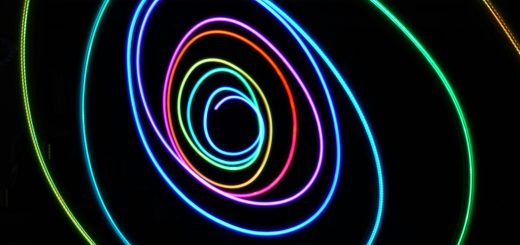The Rise of Prefabricated Homes

TRANSLATE BUTTON AT THE END OF THE ARTICLE
A Quick Overview
Prefabricated homes, once seen as a novelty, have risen in popularity due to their numerous benefits and advancements in technology.
These homes are constructed off-site in a factory setting and then transported to the final location for assembly.
From cost savings to sustainability, prefabricated homes offer a range of advantages that appeal to modern homeowners.
In this article, we will delve into the history of prefabricated homes, their benefits, types, eco-friendly aspects, cost comparison with traditional homes, customization options, popular designs, technological advancements, the rise of modular construction, sustainability, factors driving demand, and future trends in the prefabricated home industry.
The History of Prefabricated Homes
The concept of prefabricated homes dates back to the early 19th century when builders started using factory-made parts for construction.
However, it was during the post-World War II housing shortage that prefabricated homes gained popularity as a quick and affordable housing solution.
Companies like Lustron Homes and Sears, Roebuck and Co. offered prefabricated homes as kits that could be assembled on-site.
Over the years, advancements in technology and materials have transformed prefabricated homes into stylish and sustainable living spaces.
Benefits of Prefabricated Homes
Prefabricated homes offer several advantages over traditional stick-built homes.
Some of the key benefits include:
Cost Savings: Prefabricated homes are often more cost-effective than traditional homes due to streamlined construction processes.
Time Efficiency: Construction of prefabricated homes is faster since much of the work is done in a controlled factory environment.
Quality Control: Prefabricated homes undergo rigorous quality checks during the manufacturing process, ensuring high-quality construction.
Sustainability: Prefabricated homes are more eco-friendly as they produce less waste and are often built with sustainable materials.
Design Options: Prefabricated homes come in a variety of styles and designs, allowing homeowners to choose a home that suits their taste and needs.
Types of Prefabricated Homes
There are several types of prefabricated homes available to suit different preferences and budgets.
Some common types include:
Modular Homes: Consist of multiple sections or modules that are built off-site and assembled on the foundation at the final location.
Panelized Homes: Walls, floors, and roof panels are manufactured in a factory and then transported to the site for assembly.
Manufactured Homes: Also known as mobile homes, these are constructed entirely in a factory and transported to the site on wheels.
Each type of prefabricated home has its own unique construction process and features, catering to a diverse range of needs.
Eco-Friendly Aspects of Prefabricated Homes
Prefabricated homes are known for their sustainable features that benefit both homeowners and the environment.
Some eco-friendly aspects of prefabricated homes include:
Energy Efficiency: Prefabricated homes are designed with energy-efficient materials and systems to reduce energy consumption.
Waste Reduction: The controlled construction environment of prefabricated homes minimizes waste production compared to traditional construction methods.
Sustainable Materials: Many prefabricated homes are built using sustainable materials like recycled wood, bamboo, and environmentally friendly insulation.
Solar-Ready Designs: Prefabricated homes can be easily designed to accommodate solar panels, promoting renewable energy use.
By incorporating these eco-friendly aspects, prefabricated homes help reduce the carbon footprint of homeowners and contribute to a greener future.
Cost Comparison with Traditional Homes
When comparing the costs of prefabricated homes with traditional stick-built homes, several factors come into play.
While the initial cost of a prefabricated home may be lower, additional costs such as transportation, site preparation, and assembly can impact the overall price.
However, prefabricated homes often offer long-term savings through energy efficiency and reduced maintenance costs.
In the long run, the total cost of owning a prefabricated home can be more economical than that of a traditional home.
Customization Options for Prefabricated Homes
Contrary to popular belief, prefabricated homes offer a wide range of customization options that allow homeowners to personalize their living spaces.
From choosing floor plans to selecting finishes and fixtures, homeowners can tailor their prefabricated homes to suit their preferences.
Many manufacturers offer customizable features such as kitchen layouts, bathroom designs, and exterior finishes, giving homeowners the flexibility to create a home that reflects their unique style and needs.
Popular Designs in Prefabricated Homes
Prefabricated homes come in various designs that cater to different architectural tastes and lifestyles.
Some popular designs include:
Modern Minimalist: Clean lines, open spaces, and minimalistic aesthetics characterize this design style.
Farmhouse Chic: Rustic elements, warm colors, and cozy interiors define this popular design trend.
Scandinavian-Inspired: Light, airy spaces, neutral tones, and natural materials are hallmarks of Scandinavian design in prefabricated homes.
These designs showcase the versatility and creativity that prefabricated homes offer, allowing homeowners to express their individuality through their living spaces.
Advancements in Prefabricated Home Technology
Advancements in technology have revolutionized the prefabricated home industry, making it more efficient, sustainable, and innovative.
From 3D modeling and virtual reality design tools to robotic construction processes, technology has streamlined the production of prefabricated homes.
Building information modeling (BIM) software allows for precise planning and coordination, while automated manufacturing techniques ensure consistent quality and accuracy.
These technological advancements have elevated the quality and appeal of prefabricated homes, making them a sought-after housing option for modern homeowners.
The Rise of Modular Construction
Modular construction, a subset of prefabricated homes, has gained popularity in recent years due to its efficiency and versatility.
Modular construction involves building individual modules or sections of a home in a factory setting and then assembling them on-site to create a complete structure.
This method of construction offers numerous benefits, including reduced construction time, enhanced quality control, and minimal on-site disruption.
The rise of modular construction has reshaped the homebuilding industry, providing a faster and more cost-effective alternative to traditional construction methods.
Sustainability in Prefabricated Home Building
Sustainability is at the core of prefabricated home building, with manufacturers prioritizing eco-friendly practices and materials.
Many prefabricated homes are built using sustainable materials like bamboo, reclaimed wood, and recycled steel, reducing the environmental impact of construction.
Energy-efficient designs, renewable energy options, and waste reduction strategies further enhance the sustainability of prefabricated homes.
By focusing on sustainable building practices, the prefabricated home industry is contributing to a more environmentally conscious approach to home construction.
Factors Driving Demand for Prefabricated Homes
Several factors are fueling the increasing demand for prefabricated homes in the housing market.
Some key drivers include:
Affordability: Prefabricated homes offer a more affordable housing option compared to traditional homes, making them attractive to cost-conscious buyers.
Speed of Construction: The faster construction timeline of prefabricated homes appeals to homeowners looking to move into their new homes quickly.
Customization Options: The ability to customize and personalize prefabricated homes to suit individual preferences is a significant draw for homebuyers.
Sustainability: The eco-friendly aspects of prefabricated homes align with the growing trend towards sustainable living and environmentally conscious choices.
These factors, combined with advancements in technology and design, are driving the demand for prefabricated homes and shaping the future of the housing industry.
Future Trends in Prefabricated Home Industry
Looking ahead, the prefabricated home industry is poised for continued growth and innovation.
Some future trends to watch for include:
Smart Home Integration: Prefabricated homes will increasingly incorporate smart home technology for enhanced convenience and energy efficiency.
Sustainable Materials: Manufacturers will continue to explore new sustainable materials and building practices to further reduce the environmental impact of prefabricated homes.
Customization: Personalization options for prefabricated homes will expand, allowing homeowners to create truly bespoke living spaces.
Urban Dwellings: The rise of urbanization will drive the demand for prefabricated homes in urban areas, offering a compact and efficient housing solution.
As the demand for affordable, sustainable, and customizable housing options grows, the prefabricated home industry will play a significant role in shaping the future of residential construction.
Conclusion
The rise of prefabricated homes represents a shift towards more efficient, sustainable, and innovative housing solutions.
With a rich history, diverse types, eco-friendly aspects, cost advantages, and customizable options, prefabricated homes offer a compelling alternative to traditional stick-built homes.
Advancements in technology, the rise of modular construction, a focus on sustainability, and increasing demand from homebuyers are driving the growth of the prefabricated home industry.
As the industry continues to evolve, future trends indicate a focus on smart home integration, sustainable materials, expanded customization options, and urban dwellings.
Prefabricated homes are not just a trend but a transformative force in the world of residential construction, shaping the way we live and build homes for years to come.

The Enlightenment Journey is a remarkable collection of writings authored by a distinguished group of experts in the fields of spirituality, new age, and esoteric knowledge.
This anthology features a diverse assembly of well-experienced authors who bring their profound insights and credible perspectives to the forefront.
Each contributor possesses a wealth of knowledge and wisdom, making them authorities in their respective domains.
Together, they offer readers a transformative journey into the realms of spiritual growth, self-discovery, and esoteric enlightenment.
The Enlightenment Journey is a testament to the collective expertise of these luminaries, providing readers with a rich tapestry of ideas and information to illuminate their spiritual path.
Our Diverse Expertise 🌟
While our primary focus is on spirituality and esotericism, we are equally passionate about exploring a wide range of other topics and niches 🌍📚. Our experienced team is dedicated to delivering high-quality, informative content across various subjects ✨.
To ensure we provide the most accurate and valuable insights, we collaborate with trusted experts in their respective domains 🧑🏫👩🏫. This allows us to offer well-rounded perspectives and knowledge to our readers.
Our blog originally focused on spirituality and metaphysics, but we’ve since expanded to cover a wide range of niches. Don’t worry—we continue to publish a lot of articles on spirituality! Frequently visit our blog to explore our diverse content and stay tuned for more insightful reads.




















